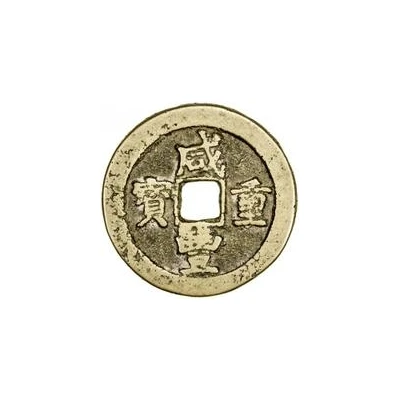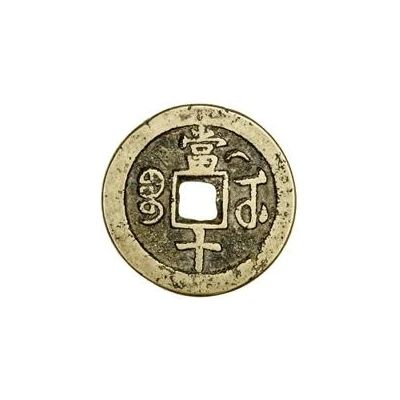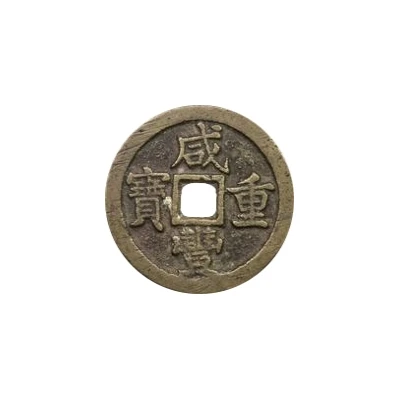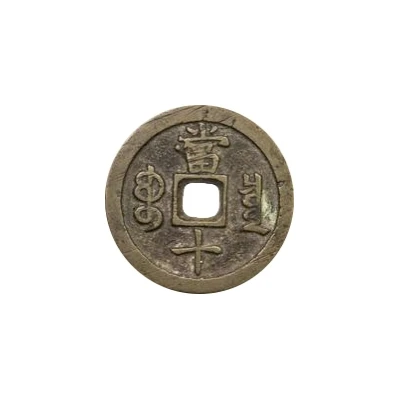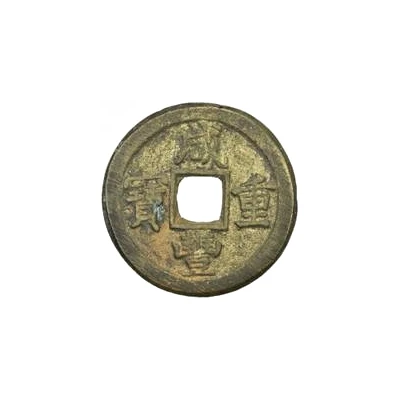
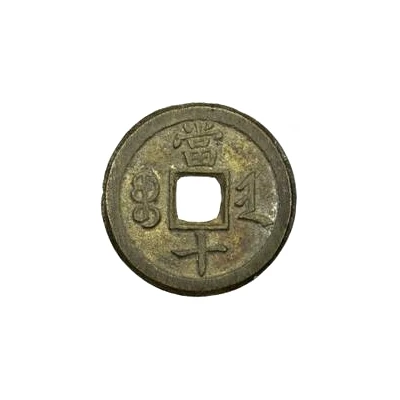

© Stephen Album Rare Coins
10 Cash - Xianfeng Zhongbao; Boo-jin ND
| Brass | - | 35 mm |
| Issuer | Empire of China |
|---|---|
| Emperor | Qing dynasty › Xianfeng (咸豐帝) (1850-1861) |
| Type | Standard circulation coin |
| Years | 1854-1856 |
| Value | 10 Cash |
| Currency | Cash (621-1912) |
| Composition | Brass |
| Diameter | 35 mm |
| Shape | Round with a square hole |
| Technique | Cast |
| Orientation | Medal alignment ↑↑ |
| Demonetized | Yes |
| Updated | 2024-10-04 |
| Numista | N#226313 |
|---|---|
| Rarity index | 97% |
Reverse
Two Manchu words (read vertically) separated by the hole, all with one Chinese ideogram above and one below.
Scripts: Chinese (traditional, regular script), Mongolian / Manchu
Lettering:
當
ᠪᠣᠣ ᠵᡳᠨ
十
Translation:
Dang Shi / Boo-jin
Value 10 / Boo-jin
Edge
Plain
Comment
DocBaoFouErInteresting fact
One interesting fact about the Standard circulation coin 10 Cash - Xianfeng (Zhongbao; Boo-jin) ND (1854-1856) from Empire of China made of Brass is that it was designed by a French engraver named Jean-Antoine Rondel, who was hired by the Chinese government to modernize their currency. This coin was part of a series of coins introduced during the Xianfeng era (1850-1861) that were designed to replace the traditional Chinese cash coins, which were cast in bronze and had been in use for centuries. The use of brass in the production of these coins was a significant departure from traditional Chinese coinage, which had always been made from bronze or other metals. The introduction of these coins marked an important step in the modernization of China's currency and paved the way for the eventual adoption of a modern currency system in the late Qing dynasty.
